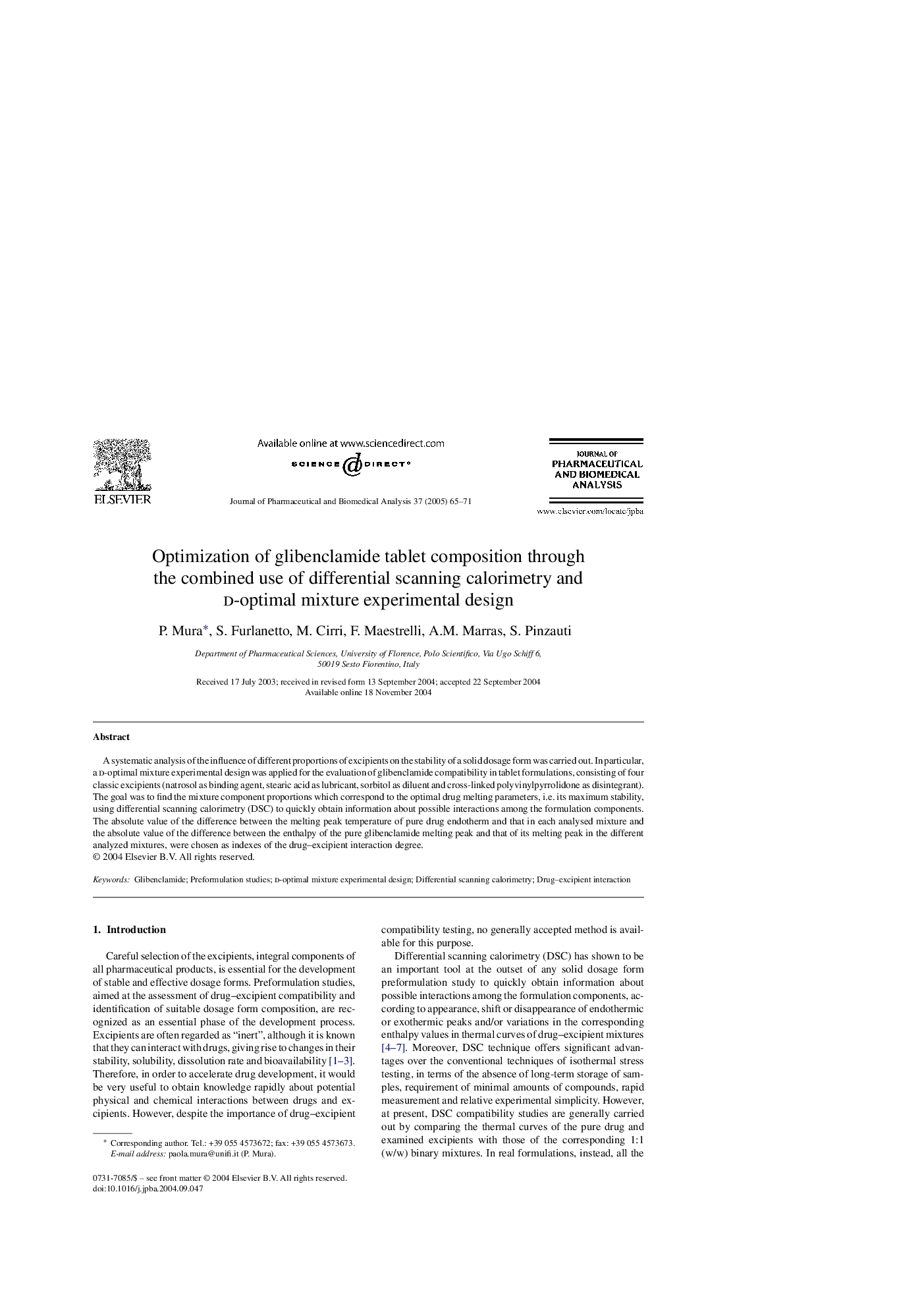| Article ID | Journal | Published Year | Pages | File Type |
|---|---|---|---|---|
| 10553959 | Journal of Pharmaceutical and Biomedical Analysis | 2005 | 7 Pages |
Abstract
A systematic analysis of the influence of different proportions of excipients on the stability of a solid dosage form was carried out. In particular, a d-optimal mixture experimental design was applied for the evaluation of glibenclamide compatibility in tablet formulations, consisting of four classic excipients (natrosol as binding agent, stearic acid as lubricant, sorbitol as diluent and cross-linked polyvinylpyrrolidone as disintegrant). The goal was to find the mixture component proportions which correspond to the optimal drug melting parameters, i.e. its maximum stability, using differential scanning calorimetry (DSC) to quickly obtain information about possible interactions among the formulation components. The absolute value of the difference between the melting peak temperature of pure drug endotherm and that in each analysed mixture and the absolute value of the difference between the enthalpy of the pure glibenclamide melting peak and that of its melting peak in the different analyzed mixtures, were chosen as indexes of the drug-excipient interaction degree.
Keywords
Related Topics
Physical Sciences and Engineering
Chemistry
Analytical Chemistry
Authors
P. Mura, S. Furlanetto, M. Cirri, F. Maestrelli, A.M. Marras, S. Pinzauti,
